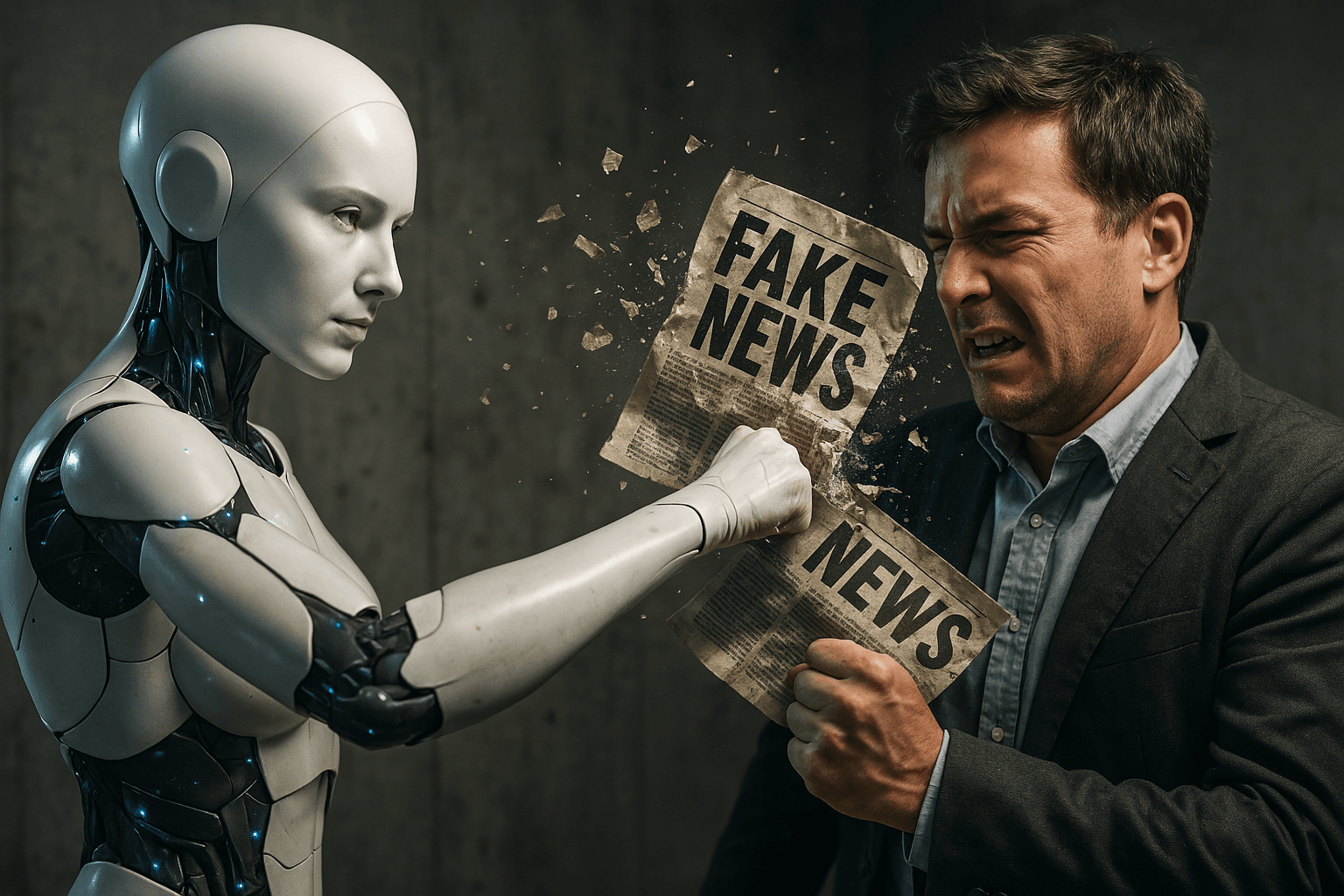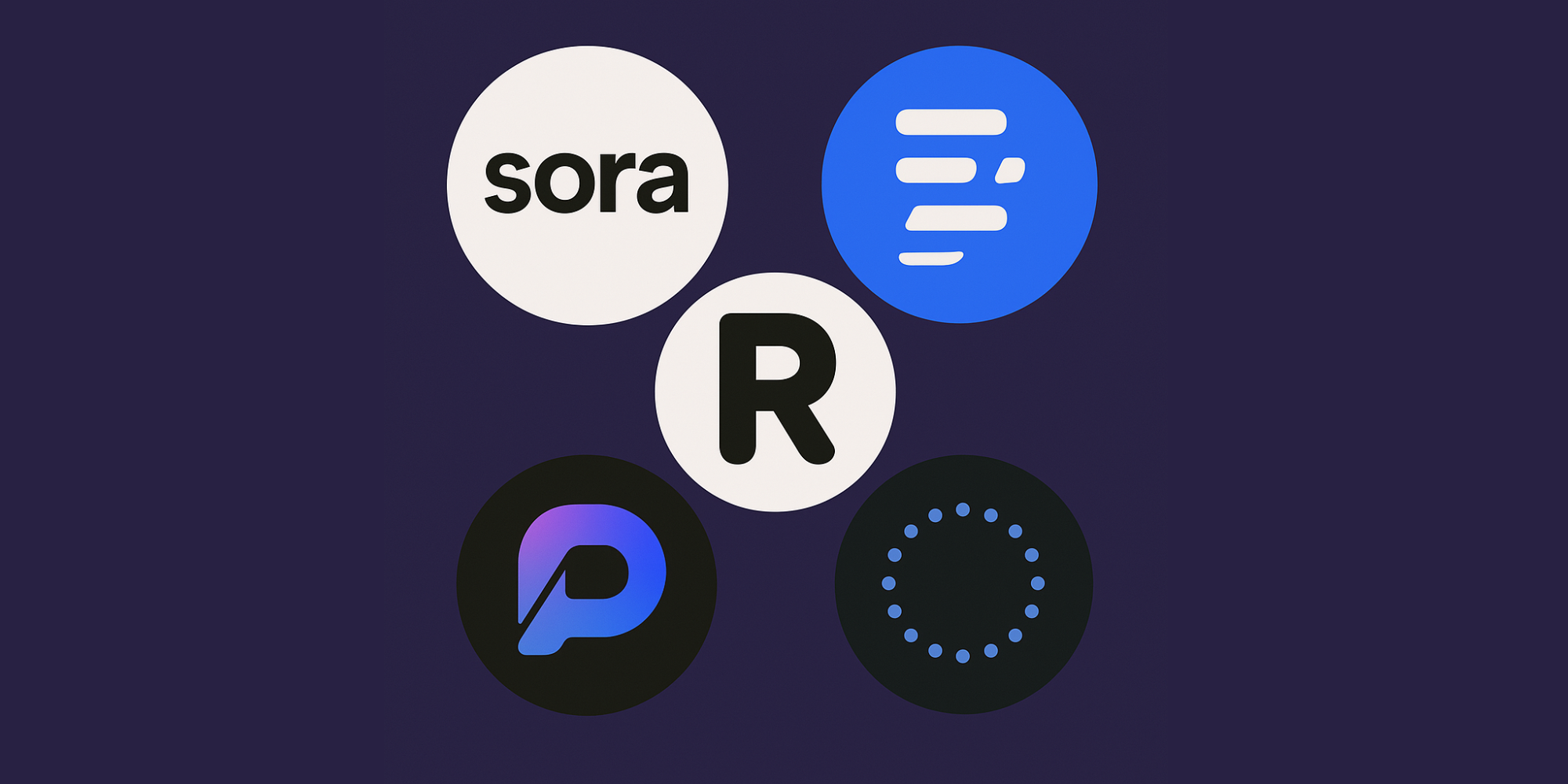
Author
Kiara
Published
Reading time
3 min.
How AI Fights Disinformation Innovative Solutions Against Fake News and Deepfakes

@ChatGPT 4o
How AI Helps Combat Disinformation
Introduction – The Flood of Fake News in the Digital Age
A few years ago, a headline in digital media caused a stir: A manipulated video of a well-known politician spread rapidly across social media – a clear demonstration of how dangerous fake news and digital disinformation can be. In an era where information spreads at lightning speed, disinformation and fake news pose a serious threat to our society. Things become particularly concerning when deepfake analysis and AI-powered tools are no longer mere novelties but instruments of truth. Yet, as the spread of manipulative content accelerates, AI systems offer new, promising tools to detect fake news and effectively combat disinformation.
What Is Disinformation – and Why Is It So Dangerous?
Disinformation is more than just false information – it is deliberately manipulated to influence public opinion. Unlike misinformation, which is often spread unintentionally, disinformation is aimed at deliberately misleading people and fueling societal polarization. An example is the spread of distorted economic data on social networks, which can lead to drastic market reactions. Likewise, manipulated political news affects elections and democratic processes.
The impact of fake news is unprecedented: The targeted dissemination of disinformation creates a climate of distrust. Experts have been warning for years about the dangerous consequences of such a distorted information ecosystem. In this context, understanding the definition of disinformation is as important as using technologies that can detect and prevent fake news.
The Role of Artificial Intelligence in the Fight Against Disinformation
AI plays a central role in curbing the spread of fake news and addressing the trust crisis in the digital space. Here are some of the key application areas:
1. Automated Detection of Fake News
Artificial intelligence uses Natural Language Processing (NLP) to automatically identify emotional or sensational language in texts. By comparing patterns with reliable sources, AI systems can filter out suspicious content and thus detect fake news before it spreads widely. This approach allows for real-time monitoring and checking of mass-published disinformation.
2. Image & Video Analysis Against Deepfakes
Particular focus is placed on detecting deepfakes – manipulated images and videos that often appear authentic. AI-powered tools analyze faces, audio tracks, and metadata to spot fake content. For example, deepfake analysis can detect suspicious deviations in movements or image contrasts, which ultimately calls the authenticity of media content into question.
3. Real-Time Fact Checking & Data Validation
Real-time data validation is another crucial aspect in the fight against disinformation. AI systems continuously search databases, knowledge graphs, and publicly accessible fact archives to immediately verify statements. With this artificial intelligence fact check, claims are compared against reliable sources in a matter of seconds – an invaluable advantage in the fast news cycle.
4. Detection of Manipulative Networks (e.g., Botnets)
Disinformation is often spread through coordinated networks or botnets. This is where AI comes in: By analyzing distribution patterns, the technology can uncover such networks and minimize their influence. Fake news algorithms identify suspicious patterns in social media traffic, enabling the early detection and disruption of manipulative structures.
Strengths and Weaknesses of AI in Fact-Checking
Automating fact-checks through AI offers numerous benefits. Scalability, speed, and largely independent data processing are among the strongest features of this technology. Millions of pieces of information can be reviewed simultaneously, significantly improving efficiency in the fight against disinformation.
However, there are also limitations. AI systems are heavily dependent on their training data and may struggle to fully grasp the context and nuances of complex content. This creates the risk of overlooking important subtleties. Therefore, human oversight remains essential – especially when evaluating critical news or controversial topics. The limitations of AI in fighting disinformation should always be considered.
How autark.news Uses AI to Prevent Disinformation
An outstanding example of AI use in journalism is provided by autark.news. With proprietary bias checkers, fact-checkers, and a structured analysis process, autark.news ensures neutral reporting. No emotional language is used – instead, pure facts are the focus. This combination of machine neutrality and human oversight ensures that the content is both accurate and credible. AI news against fake news thus becomes a reliable tool for restoring trust in digital media.
Conclusion – Using AI Against the Digital Trust Crisis
In summary, artificial intelligence plays a key role in identifying fake news and sustainably combating disinformation. With techniques such as automated text recognition, deepfake analysis, real-time fact checking, and the identification of manipulative networks, a comprehensive protection against digital misinformation is created. Although the technology has its limits, the sensible combination with human oversight is the key to a trustworthy information ecosystem.
AI is therefore not just a tool, but a true game changer in the fight against digital disinformation. Be part of the movement – stay informed, remain critical, and support platforms that take responsibility. Share this article and help raise awareness of the importance of digital media literacy!
FAQ – Frequently Asked Questions on the Topic
Question 1: How does AI specifically help detect fake news?
Answer: AI analyzes texts, images, and videos using algorithms and Natural Language Processing. It compares content with verified databases, detects suspicious patterns, and filters out misinformation in real time.
Question 2: What distinguishes disinformation from misinformation?
Answer: While misinformation is usually unintentionally spread errors, disinformation refers to deliberately manipulated content aimed at influencing opinions and polarizing public discourse.
Question 3: What role does AI fact-checking play in everyday journalism?
Answer: The use of AI in fact-checking enables fast and scalable verification of information. This helps journalists present reliable facts and reduce the spread of fake news.
Question 4: Can AI-powered systems operate completely autonomously?
Answer: No, despite their impressive capabilities, AI tools often still rely on human oversight, especially when it comes to correctly interpreting complex contexts and nuances.
Question 5: How does artificial intelligence help improve digital media literacy?
Answer: By detecting fake news and preventing disinformation, AI creates a more transparent information environment. This fosters critical thinking and encourages users to question content – an important step toward strengthening digital media literacy.
Would you like to learn more about how AI combats disinformation, or do you have further questions? Contact us directly – we look forward to the exchange!
Related Articles
Subscribe to newsletter
Get the latest articles directly in your inbox.


